-
2 July, 2014 Sabatini Building, Auditorium
Session 1. Expeditions
Signs of Empire
Colour, sound, 20’50’’, 1982-84. Original format: 35mm slides, screening format: Blu-ray. Distribution: Smoking Dogs FilmsImages of Nationality
Colour, sound, 22’44’’, 1982-84. Original format: 35mm slides, screening format: Blu-ray. Distribution: Smoking Dogs Films.Both film projects form Expeditions , Black Audio Film Collective’s inaugural work approached in two parts. Expeditions shares deliberated hermeticism and the use of allegory in art practices from the beginning of the 1980s. Signs of Empire and Images of Nationality both include familiar aspects in the collective’s work: the dimension of sound in the image, the audiovisual remix of archive and the use of text as collective writing. Signs of Empire draws from Roland Barthes and his Empire of Signs , resolving to show historical signs from colonialism, while Images of Nationality addresses the continuity of the myth of the nation.
-
3 July, 2014 Sabatini Building, Auditorium
Session 2. Handsworth Songs
Colour, sound, 60’, 1986. Original format: 16mm film, screening format: Betacam Digital. Distribution: LUX.
At the beginning of 1985 a series of race riots and labour protests took place in Handsworth (Birmingham) and Brixton (London), culminating in the death of an elderly black woman and a white policeman. The film joins the civil unrest and a multiple story of dispossession, delving deeper into the roots of contradictions from the colonial past and connecting the economic and industrial crisis at the time. By using the traditions of reformist documentaries in Britain (John Grierson, Humphrey Jennings and Basil Wright), together with archives of black presence (and absence) in the UK, Handsworth Songs concludes that any meaning has to be sought outside of news reporting. The Songs from the title does not refer to musicality in the film, but instead invokes an updated idea of documentary, devised as a poetic montage of associations.
-
9 July, 2014 Sabatini Building, Auditorium
Session 3. Twilight City
Colour, sound, 52’, 1989. Original format: 16mm film, screening format: Betacam Digital. Distribution: Smoking Dogs Films.
An epistolary documentary essay that narrates the story of a young girl in London who writes to her mother on the island of Dominica. Her letters recount the changes occurring in the city while the Docklands are being rebuilt as the film intersperses this social and psychological landscape of the city as a symbolic space in which the transformation of the urban panorama into financial affluence converges with the hopes and disappointments of African diaspora. This intimate space, with echoes of Chantal Akerman’s News from Home, is imbued with debates on the public sphere, where sociologists, activists and historians draw up a new urban territory, mapped out by racial and cultural limits. A place with people existing in close proximity but living in different worlds, as Paul Gilroy remarks.
-
10 July, 2014 Sabatini Building, Auditorium
Session 4. Who Needs a Heart
Colour, sound, 78’, 1991. Original format: 16mm film, screening format: Betacam Digital. Distribution: LUX.
This film, produced by Channel Four, explores the history of British Black Power by means of the blurred figure of Michael Abdul Malik, the predominant counter-culture anti-hero and activist in the movement. Nevertheless, the narration keeps its distance from this historical figure and traces his biography from radio and television documents, complemented with the lives of other participants in the movement. Trevor Mathison’s soundtrack is arranged to produce a deliberate estrangement with the images, and Who Needs a Heart sets out a fragmented narration that flashes back and jumps forward, bringing in fiction as a postcolonial chamber theatre, in the words of Kobena Mercer, supporting itself with music, the street and art to reclaim the genealogy of blackness.
-
16 July, 2014 Sabatini Building, Auditorium
Session 5. The Last Angel of History
The Last Angel of History
Colour, sound, 45’, 1995. Original format: 16mm film, screening format: Betacam Digital. Distribution: Smoking Dogs Films.One of the collective’s last and most influential film essays, The Last Angel of History concentrates its combination of interests in a highly complex and disparate manner. Located between critical theory and science fiction, the Data Thief, a version from Walter Benjamin’s story, played by Edward George (a member of the collective), travels into the past to assemble fragments of information that will enable him to decipher the future. The cosmic journey and alien iconography prevalent in the music of Sun Ra, Lee Perry and George Clinton is interpreted as a metaphor of diaspora and the otherness of the black subject in white society. Thus, free jazz and black electronic music imagine a future that is inevitably condemned to the past.
Sounds in Diaspora. The Cinema of the Black Audio Film Collective
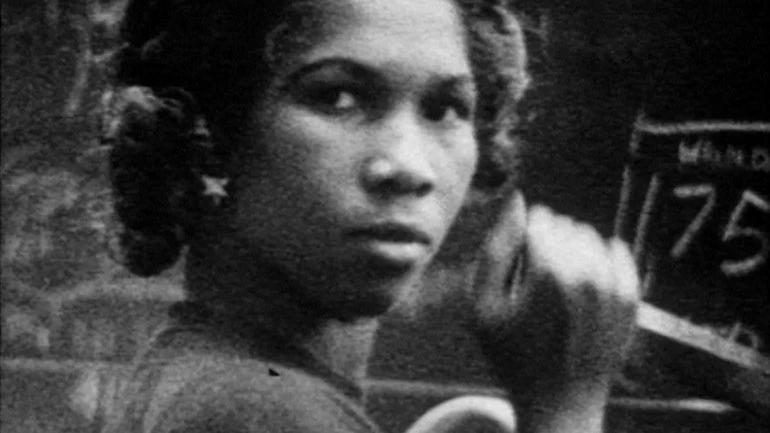
Held on 02, 03, 09, 10, 16 jul 2014
Active in the UK between 1982 and 1997, the Black Audio Film Collective symbolised a radical attempt to transform education, institutions and the representation of black identity in independent film. Sounds in Diaspora comprises five sessions that run through this collective’s work, presented in Spain for the first time. Founded by John Akomfrah, Reece Auguiste, Lina Gopaul, Trevor Mathison, David Lawson, Edward George and Claire Joseph, the collective was a multidisciplinary team made up of film-makers, sound artists, activists, sociologists and producers, characterised by the horizontal work it distributed, along with an overhaul of realist documentary making through the display of colonial imagery originating from archive. Their films question the identity hegemony during the years of Thatcherism and, under the influence of Stuart Hall and nascent film theory, they came to examine popular culture – cinema in particular – as the primary element of resistance.
The Black Audio Film Collective stands out because of its formulation of an aesthetic programme centred on updating the revolutionary approaches of Third Cinema, which emerged in Latin America, Africa and Asia in the 1960s and 70s. As a result, they would conceive a language that was able to represent the subject and the experience of diaspora; while Third Cinema articulated global imagery of resistance based on the tension between the coloniser and the colonised, Black Audio would transform these notions from metropolitan Europe. Their work advances a more complex, nomadic and cosmopolitan identity, where travel, dispossession and fragmented memory form a visual and sound palimpsest that joins the past to the present as the country to the colony, the exploiter and the colonised become inseparable.
Curatorship
Chema González
Más actividades
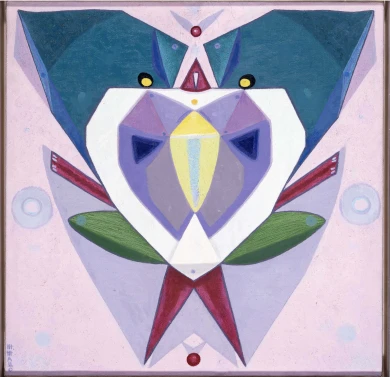
Estrella de Diego Lecture. Holding Your Brain While You Sleep
Wednesday, 3 December 2025 – 7pm
Framed inside the Museo Reina Sofía’s retrospective exhibition devoted to Maruja Mallo, this lecture delivered by Estrella de Diego draws attention to the impact of the artist’s return to Spain after her three-decade exile in Latin America.
Committed to values of progress and renewal in the Second Republic, Mallo was forced into exile to Argentina with the outbreak of the Civil War and would not go back to Spain to settle definitively until 1965 — a return that was, ultimately, a second exile.
Mallo saw out her prolific artistic trajectory with two impactful series: Moradores del vacío (Dwellers of the Void, 1968–1980) and Viajeros del éter (Ether Travelers, 1982), entering her most esoteric period in which she drew inspiration from her “levitational experiences” of crossing the Andes and sailing the Pacific. Her travels, both real and imaginary, became encounters with superhuman dimensions.
In parallel, her public persona gained traction as she became a popular figure and a key representative of the Generation of ‘27 — the other members of which also started returning to Spain.
This lecture is part of the Art and Exile series, which seeks to explore in greater depth one of the defining aspects of Maruja Mallo’s life and work: her experience of exile. An experience which for Mallo was twofold: the time she spent in the Americas and her complex return to Spain.
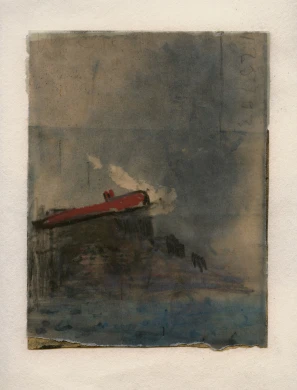
Juan Uslé. That Ship on the Mountain
Tuesday, 25 November 2025 – 7pm
Ángel Calvo Ulloa, curator of the exhibition Juan Uslé. That Ship on the Mountain, engages in conversation with artist Juan Uslé (Santander, 1954) in the Museo’s Auditorium 400 to explore in greater depth the exhibition discourse of this anthological show spanning four decades of Uslé’s artistic career.
The show casts light on the close relationship Uslé’s work bears to his life experiences, establishing connections between different stages and series which could ostensibly seem distant. Framed in this context, the conversation looks to explore the artist’s personal and professional journey: his memories, experiences of New York, his creative process, conception of painting, and ties with photography and film, and the cohesiveness and versatility that characterise his art. Key aspects for a more in-depth understanding of his artistic sphere.
The conversation, moreover, spotlights the preparatory research process that has given rise to this exhibition to grant a better understanding of the curatorial criteria and decisions that have guided its development.
These inaugural conversations, part of the main working strands of the Museo’s Public Programmes Area, aim to explore in greater depth the exhibition narratives of the shows organised by the Museo from the perspective of artists, curators and specialists.

Fifteenth Edition of the Márgenes Festival
Sunday, 23 November 2025 - 7:30pm
This year’s opening night of the fifteenth edition of the Márgenes International Contemporary Film Festival will take place inside the Museo Reina Sofía. The inaugural session will witness artists Neutro Gris and Nodoaviom perform, live and for the first time, the multimedia performance Music 4 Salvation, which extends their language towards a sensorial experience fusing sound, image and digital emotion.
Music 4 Salvation unfolds as a sound and visual collage in which different strands are linked in one sole narrative of youth and adulthood, notions from which the piece puts forward a second reading of popular symbology and iconography and culminates by evoking the transitional time between these two stages of life. And all from a post-internet gaze and found footage aesthetics.
The Márgenes Festival is held from 23 to 30 November in Madrid and shines a light on innovative initiatives that combine up-and-coming and acclaimed talent. Its film programme explores the convergence of cinema, the visual arts and sound art with approaches that expand the limits of the film experience, encompassing screenings, audiovisual shows, performances, encounters and sessions for children. In addition to the opening event, the Museo also welcomes, among the organised activities this year, the series Emotional Interface. The Films of Metahaven.
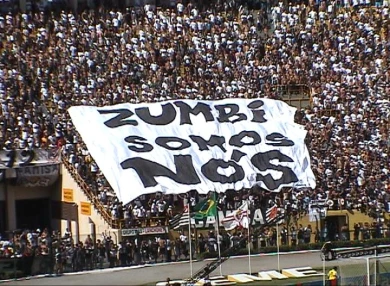
The History and Roots of Samba
Saturday, 22 November 2025 – 6pm
Museo Situado and the Maloka Brazilian Cultural Association come together to offer this artistic, historical and social activity in conjunction with Black Consciousness Day in Brazil, which pays homage to Dandara and Zumbi dos Palmares, universal symbols of Afro-Brazilian resistance and the fight against slavery.
In the activity, dance, poetry and performance become tools of memory and resistance via a programme which surveys the history of samba, from its origins in Bahia to its consolidation in Rio de Janeiro. It features the participation of more than ten Brazilian artists and pays homage to key figures in samba such as Tia Ciata, Clementina de Jesús, Cartola, Dona Ivone Lara, Elza Soares, Martinho da Vila and Alcione.
Further, the event seeks to shine a light on the richness of Afro-Brazilian culture while opening a space of reflection on resistance to racism throughout history and today, as well as inequality and disregard. In the words of philosopher Sueli Carneiro (2000), “the fight for the rights of black women and the community of African descent is inseparable from the rescue of history and the memory of our ancestors”. It is an artistic and vindicatory celebration that invites the whole community to aquilombarse: to come together, celebrate and affirm collective memory, for, as sociologist Florestan Fernandes (1976) affirmed, “the history of peoples of African descent can only be understood through the active resistance to oppression”. Long live Dandara. Long live Zumbi. Long live Afro-Brazilian ancestry.
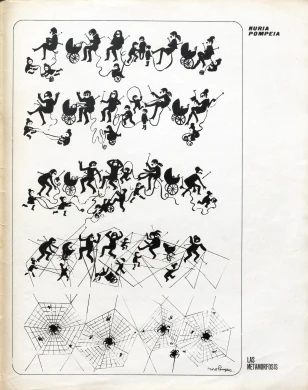
Crossed Vignettes
Friday, 21 November 2025 – Check programme
The Crossed Vignettes conference analyses the authorship of comics created by women from an intergenerational perspective and draws from the Museo Reina Sofía Collections. Across different round-table discussions, the programme features the participation of illustrators Marika, Carla Berrocal, Laura Pérez Vernetti and Bea Lema and researchers Viviane Alary, Virginie Giuliana and Elisa McCausland.
The aim of the encounter is twofold: to explore in greater depth the different forms in which women comic book artists have contributed to developing a counterculture; namely, the appearance of ruptures, reformulations and new genres within the ninth art. And to set up a dialogue which ignites an exploration of genealogies linking different generations of artists.
Moreover, the activity is put forward as a continuation to the exhibition Young Ladies the World Over, Unite! Women Adult Comic Book Writers (1967–1993) and the First International Conference on Feminist Comic Book Genealogies, held in April 2024 at the Complutense University of Madrid.
In redefining the visual narratives of the comic book and questioning gender stereotypes in a male-dominated world, women comic book writers and artists have impelled greater visibility and a more prominent role for women in this sphere. The study of intergenerational dialogue between female artists past and present enables an analysis of the way in which these voices reinterpret and carry the legacy of their predecessors, contributing new perspectives, forms of artistic expression and a gender-based hybridisation which enhances the world of comics.
The conference, organised jointly by the Museo Reina Sofía and Université Clermont Auvergne/CELIS (UR4280), features the participation of the Casa de Velázquez and is framed inside the context of the CALC programme The Spanish Artistic Canon. Between Critical Literature and Popular Culture: Propaganda, Debates, Advertising (1959–1992), co-directed by Virginie Giuliana. It is also the outcome of the projects Horizon Europa COST Actions iCOn-MICs (Comics and Graphic Novels from the Iberian Cultural Area, CA19119) and COS-MICs (Comics and Sciences, CA24160).



![Miguel Brieva, ilustración de la novela infantil Manuela y los Cakirukos (Reservoir Books, 2022) [izquierda] y Cibeles no conduzcas, 2023 [derecha]. Cortesía del artista](https://recursos.museoreinasofia.es/styles/small_landscape/public/Actividades/ecologias_del_deseo_utopico.jpg.webp)
![Ángel Alonso, Charbon [Carbón], 1964. Museo Reina Sofía](https://recursos.museoreinasofia.es/styles/small_landscape/public/Actividades/perspectivas_ecoambientales.jpg.webp)